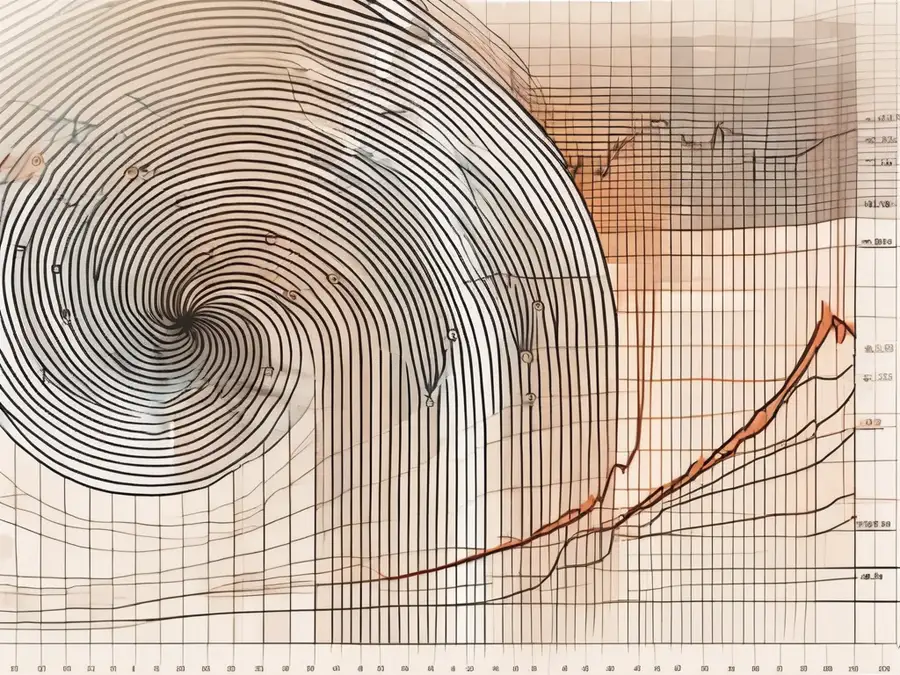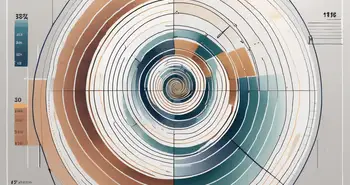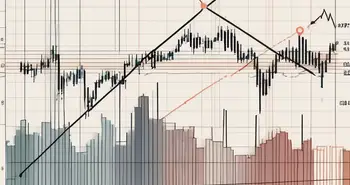Fibonacci Chart Patterns

In the world of trading and technical analysis, understanding Fibonacci chart patterns can provide valuable insights and help make informed investment decisions. Fibonacci chart patterns are based on the mathematical principles derived from the famous Fibonacci sequence. In this ultimate guide, I will take you through the basics, types, identification, application, and common mistakes to avoid when it comes to Fibonacci chart patterns.
Understanding the Basics of Fibonacci Chart Patterns
The History and Theory Behind Fibonacci Numbers
To truly grasp the power of Fibonacci chart patterns, it's important to appreciate their historical significance and underlying theory. These patterns are named after Leonardo Fibonacci, an influential Italian mathematician from the 13th century. Fibonacci numbers, derived from his sequence, have been found to occur consistently in nature, art, and even financial markets.
Leonardo Fibonacci, also known as Leonardo of Pisa, introduced the Fibonacci sequence to the Western world through his book “Liber Abaci” in 1202. The sequence itself had been previously described in Indian mathematics, but Fibonacci's work brought it to the forefront of European mathematics.
The Fibonacci sequence begins with 0 and 1, and each subsequent number is the sum of the two preceding numbers (0, 1, 1, 2, 3, 5, 8, and so on). These numbers create unique relationships that can be applied to charts and patterns in trading.
What makes Fibonacci numbers fascinating is their prevalence in nature. From the branching patterns of trees to the arrangement of petals on flowers, Fibonacci numbers can be found everywhere. This phenomenon, known as the “golden ratio,” is a mathematical proportion that is aesthetically pleasing to the human eye.
The Importance of Fibonacci Ratios in Trading
One of the key concepts in Fibonacci chart patterns is the use of Fibonacci ratios. The most common ratios used in trading are 38.2%, 50%, and 61.8%. These ratios are derived from dividing a number in the sequence by the number that follows it. By applying these ratios to price movements, traders can identify potential support and resistance levels, as well as areas of price retracement and extension.
When a trader applies Fibonacci ratios to a chart, they are essentially looking for areas where price may reverse or continue its trend. The 38.2% ratio is often considered a shallow retracement level, while the 61.8% ratio is seen as a deeper retracement level. The 50% ratio is a common point of interest, as it represents a halfway retracement.
Personally, I was first introduced to Fibonacci ratios early in my trading career. I vividly remember how incorporating them into my analysis completely transformed my trading results. It was like unlocking a secret code that allowed me to anticipate market movements with greater precision.
Understanding Fibonacci chart patterns and ratios is not just about numbers and calculations. It's about recognizing the natural order and harmony that exists in the markets. By tapping into these patterns, traders can gain a deeper understanding of price movements and make more informed trading decisions.
It's important to note that Fibonacci chart patterns are not foolproof indicators. They should be used in conjunction with other technical analysis tools and indicators to confirm potential trading opportunities. However, when used correctly, Fibonacci ratios can provide valuable insights into market behavior and enhance a trader's overall strategy.
The Different Types of Fibonacci Chart Patterns
Fibonacci Retracement
Fibonacci retracement is one of the most widely used chart patterns by traders. It involves drawing horizontal lines at key Fibonacci levels to identify potential areas of support or resistance. These levels are drawn between a significant high and low point in a price chart, allowing traders to anticipate potential price reversals.
Fibonacci Extension
Fibonacci extension is another powerful tool in the arsenal of technical analysts. This pattern helps traders identify potential price targets beyond the current price movement. By extending the Fibonacci levels beyond the initial high and low points, traders can project where the price could potentially reach in the future.
Fibonacci Fan
The Fibonacci fan is a unique tool that helps traders visualize potential trendlines based on Fibonacci ratios. Traders can use the fan lines to identify areas of support and resistance, as well as potential trend reversal zones.
How to Identify Fibonacci Chart Patterns
Spotting Fibonacci Retracement Levels
Identifying Fibonacci retracement levels involves locating significant highs and lows in a price chart. These levels act as potential support or resistance areas, indicating where price could reverse its direction.
One method to spot retracement levels is by drawing Fibonacci lines between these high and low points. The most common retracement levels are drawn at 38.2%, 50%, and 61.8% of the previous price movement. These levels act as potential buying or selling zones.
Recognizing Fibonacci Extension Patterns
Fibonacci extension patterns are identified by extending the Fibonacci lines beyond the initial high and low points. Traders look for key Fibonacci levels, such as 127.2% and 161.8%, to determine potential price targets. These levels can help traders set profit targets or anticipate price movements beyond the current trend.
Understanding Fibonacci Fan Lines
Fibonacci fan lines are drawn by connecting a significant low and high point and extending the lines to form a fan shape. These lines act as potential areas of support and resistance. Traders can monitor price movements near these fan lines to identify potential trend reversals or breakout opportunities.
Applying Fibonacci Chart Patterns in Trading
Using Fibonacci Patterns for Entry and Exit Points
One of the key advantages of Fibonacci chart patterns is their ability to provide precise entry and exit points. By combining Fibonacci levels with other technical indicators, traders can increase the likelihood of successful trades. For example, when price retraces to a Fibonacci support level and shows signs of bullish reversal patterns, it can be a potential entry point to go long.
Personally, I always keep an eye on Fibonacci confluence zones, which are areas where multiple Fibonacci levels align. These zones often act as strong support or resistance areas, providing excellent entry and exit points.
Combining Fibonacci Patterns with Other Technical Indicators
While Fibonacci chart patterns are powerful on their own, they become even more effective when combined with other technical indicators. By using indicators like moving averages, oscillators, or trendlines alongside Fibonacci retracement or extension levels, traders can increase the accuracy of their analysis and make more confident trading decisions.
For instance, combining Fibonacci retracement levels with a trendline breakout can validate potential reversal zones and help traders identify strong entry points.
Common Mistakes to Avoid When Using Fibonacci Chart Patterns
Over-reliance on Fibonacci Patterns
Although Fibonacci chart patterns can be remarkably accurate, it's crucial to avoid over-reliance. These patterns should always be used in conjunction with other forms of analysis, such as fundamental analysis and market sentiment. Relying solely on Fibonacci levels without considering other factors can lead to missed opportunities or false signals.
Misinterpreting Fibonacci Levels
Misinterpreting Fibonacci levels is another common mistake traders make. It's essential to ensure that the selected high and low points accurately represent the price swings being analyzed. Using incorrect reference points can lead to inaccurate Fibonacci levels and invalid trading signals.
Q: What are Fibonacci chart patterns?
A: Fibonacci chart patterns are technical analysis tools based on mathematical relationships derived from the Fibonacci sequence. These patterns can help traders identify potential areas of support and resistance, as well as price targets for future movements.
Q: How do I identify Fibonacci chart patterns?
A: Fibonacci chart patterns can be identified by locating significant high and low points in a price chart. These points are then used to draw Fibonacci lines, which act as potential support and resistance levels.
Q: Can Fibonacci chart patterns be used on any market?
A: Yes, Fibonacci chart patterns can be applied to various financial markets, including stocks, commodities, forex, and cryptocurrencies. These patterns are based on mathematical principles that are inherent in market price movements.
Q: Are Fibonacci chart patterns 100% accurate?
A: While Fibonacci chart patterns can be highly accurate, no trading strategy is foolproof. It's essential to use Fibonacci levels in conjunction with other forms of analysis and risk management techniques to increase the likelihood of successful trades.
Ready to take your trading to the next level with the insights from Fibonacci chart patterns? Discover the innovative world of Morpher, where cutting-edge blockchain technology meets trading. With Morpher, you can apply your knowledge of Fibonacci patterns across a multitude of markets, including stocks, cryptocurrencies, forex, and more, all with zero fees and infinite liquidity. Embrace the power of fractional investing, short selling, and up to 10x leverage to maximize your trading strategies. Ensure your safety with the non-custodial Morpher Wallet and experience the unique trading opportunities on the Ethereum Blockchain. Sign Up and Get Your Free Sign Up Bonus today to transform the way you trade with Morpher.

Disclaimer: All investments involve risk, and the past performance of a security, industry, sector, market, financial product, trading strategy, or individual’s trading does not guarantee future results or returns. Investors are fully responsible for any investment decisions they make. Such decisions should be based solely on an evaluation of their financial circumstances, investment objectives, risk tolerance, and liquidity needs. This post does not constitute investment advice.

Painless trading for everyone
Hundreds of markets all in one place - Apple, Bitcoin, Gold, Watches, NFTs, Sneakers and so much more.

Painless trading for everyone
Hundreds of markets all in one place - Apple, Bitcoin, Gold, Watches, NFTs, Sneakers and so much more.









